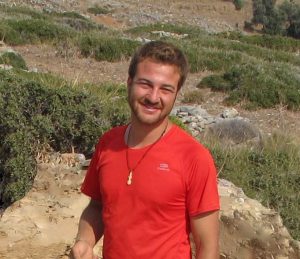
Archaeologist
The Greek name “monopati” means pathway, and the Cycladic Islands are commonly characterised by their famous ones. Farmers and shepherds use these “monopati” to reach their fields on slopes. It is not rare to meet there a wise man on his donkey contemplating silently the changes of nature.
What I’m going to describe to you here is another story, which has for its main actors a different kind of observer: the archaeologists.
Every morning we walk on our “monopati” to the site of Zagora. It is about 1.8 kms from the main road and it takes about 25 minutes by foot.
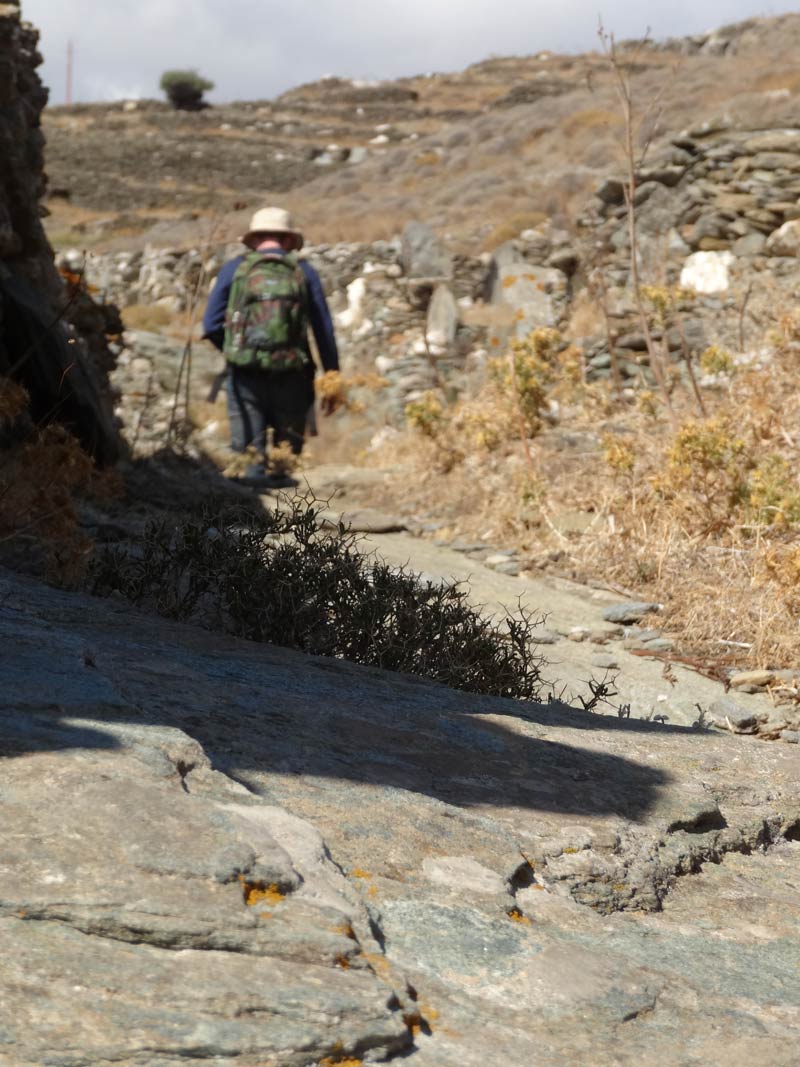
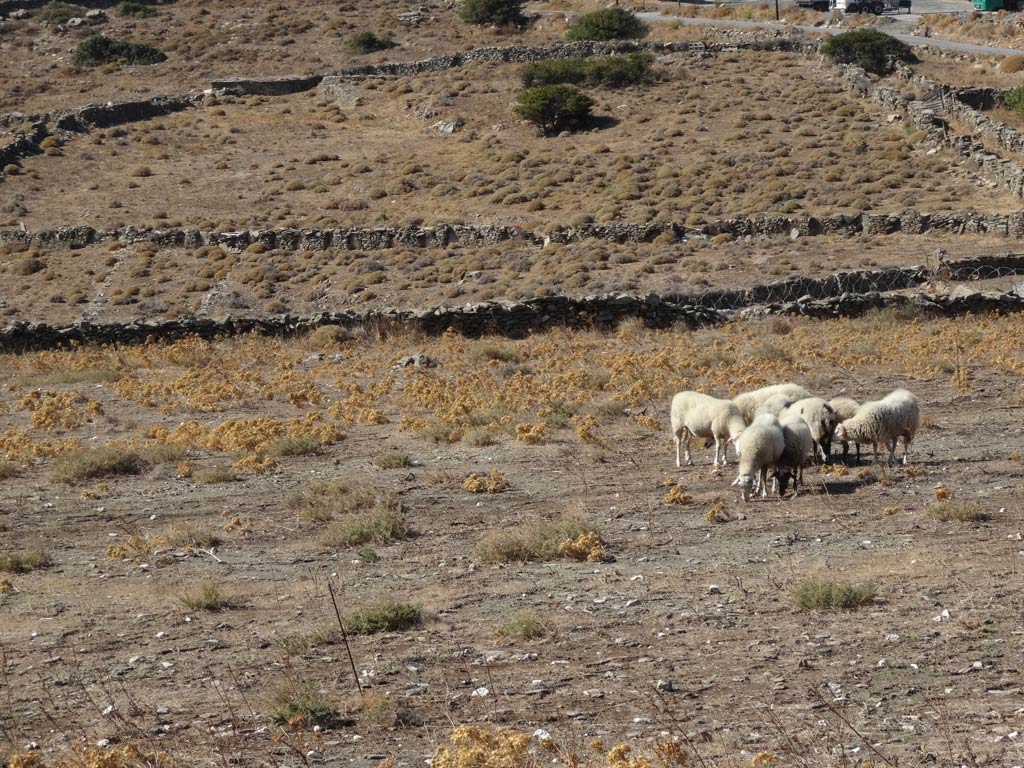
When everything is still quiet and nature starts to awake from the sleepy night, it become a good friend with whom we share our thoughts. The characteristic local stone, schist (“xistolithos” in Greek), is a flat shiny stone, mostly in a silver colour or darker, sometimes very green. It is characterised by friable layers and can have veins of different types of rock.
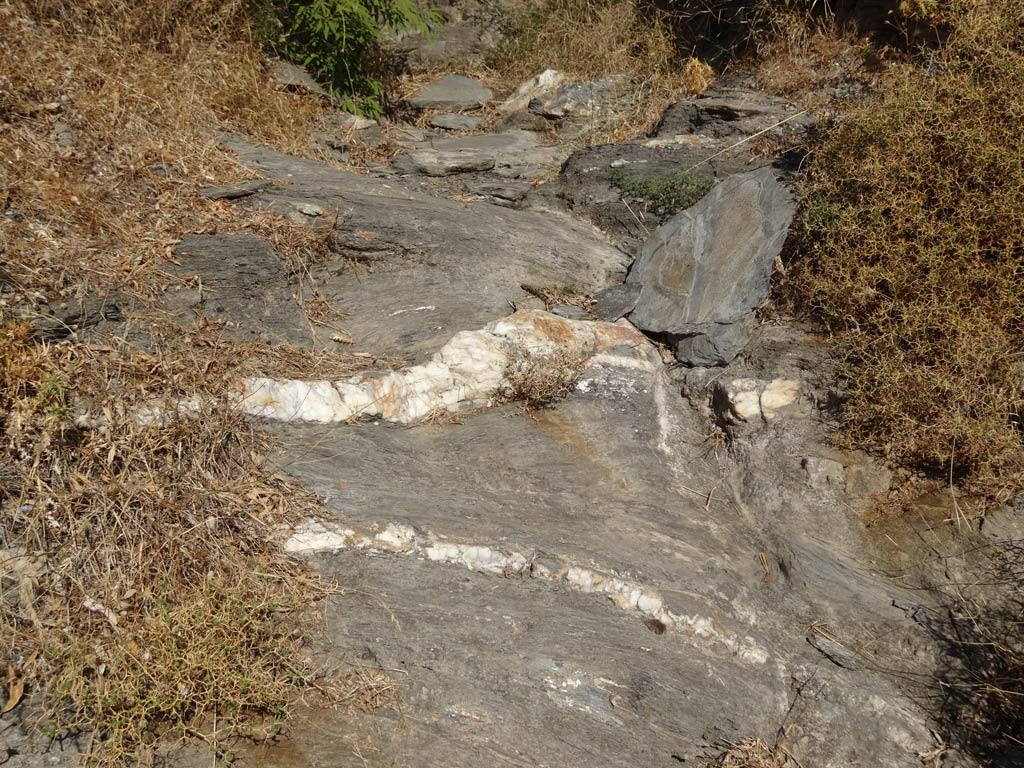
At the beginning of the main road there is the Church of Agia Triada (the Holy Trinity) which provides welcome shade to restore us after having climbed back up from the site at the end of the day.
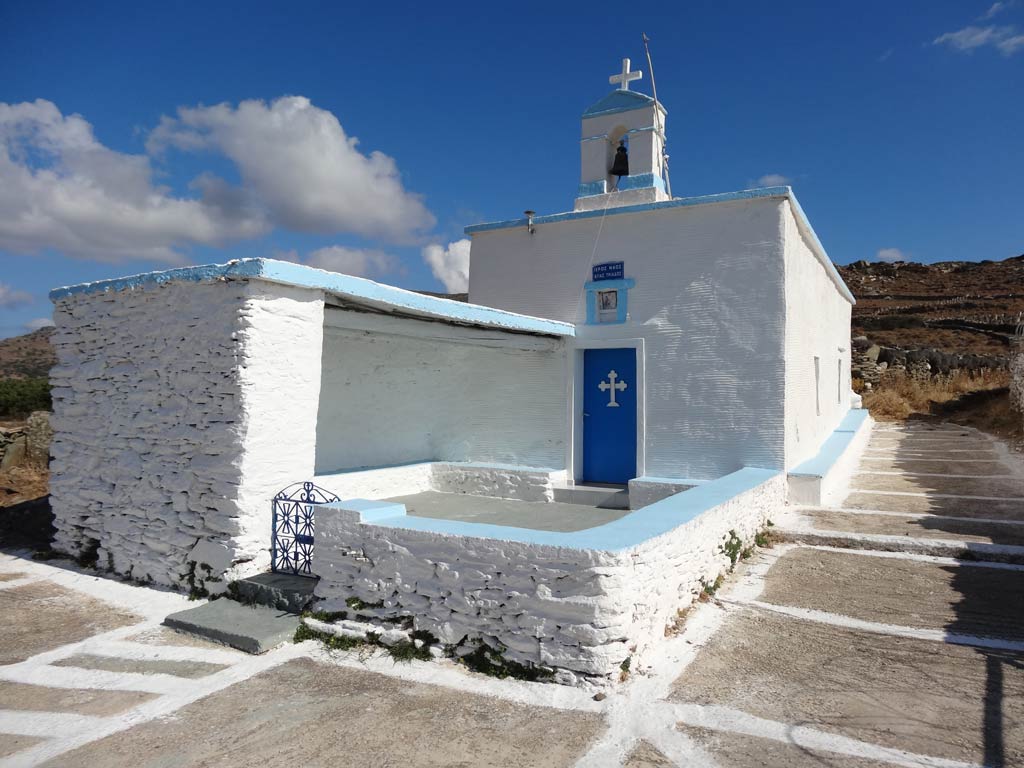
Going down at some points is very hard and we walk through dry channels that during spring provide water to the fields by streams. The hardest part on the path is in fact a very steep channel, which we have called “Heartbreak Hill”. The water had modified its shape, creating little wavy lines like brush strokes of Edward Munch’s paintings.
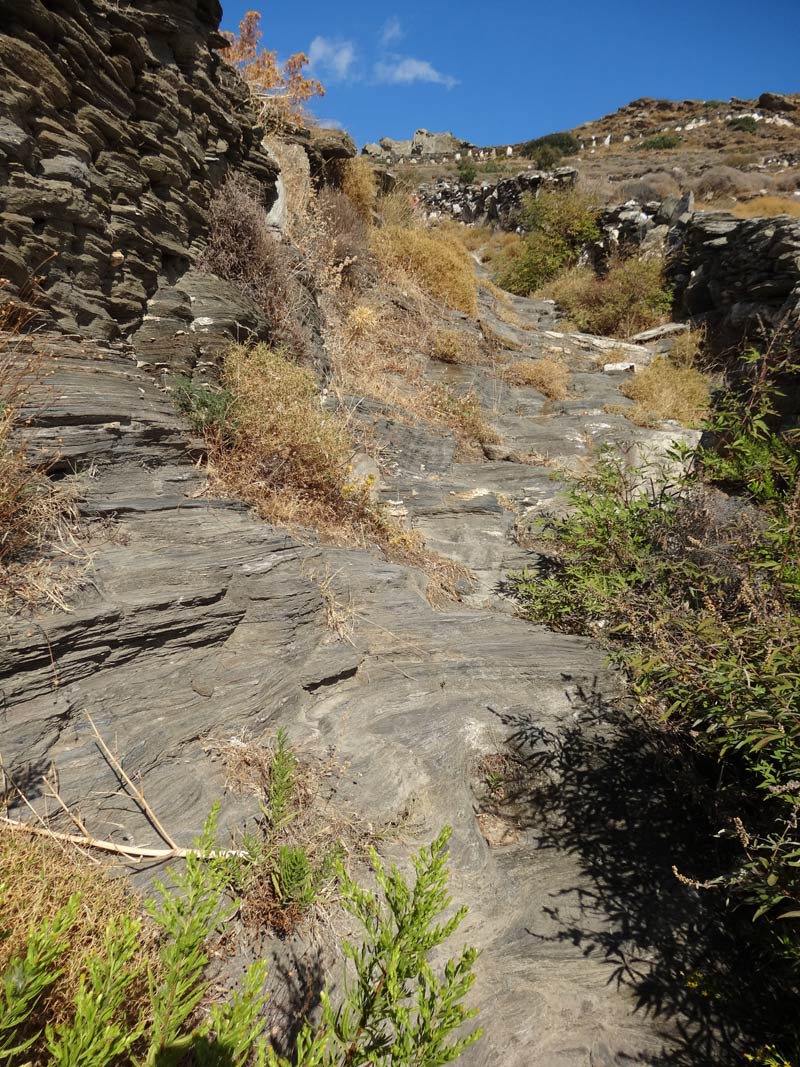
It is always fascinating for us to stop briefly near farmhouses and wonder how similar could have been the past houses of Zagora, with their roofs of wide schist slabs.
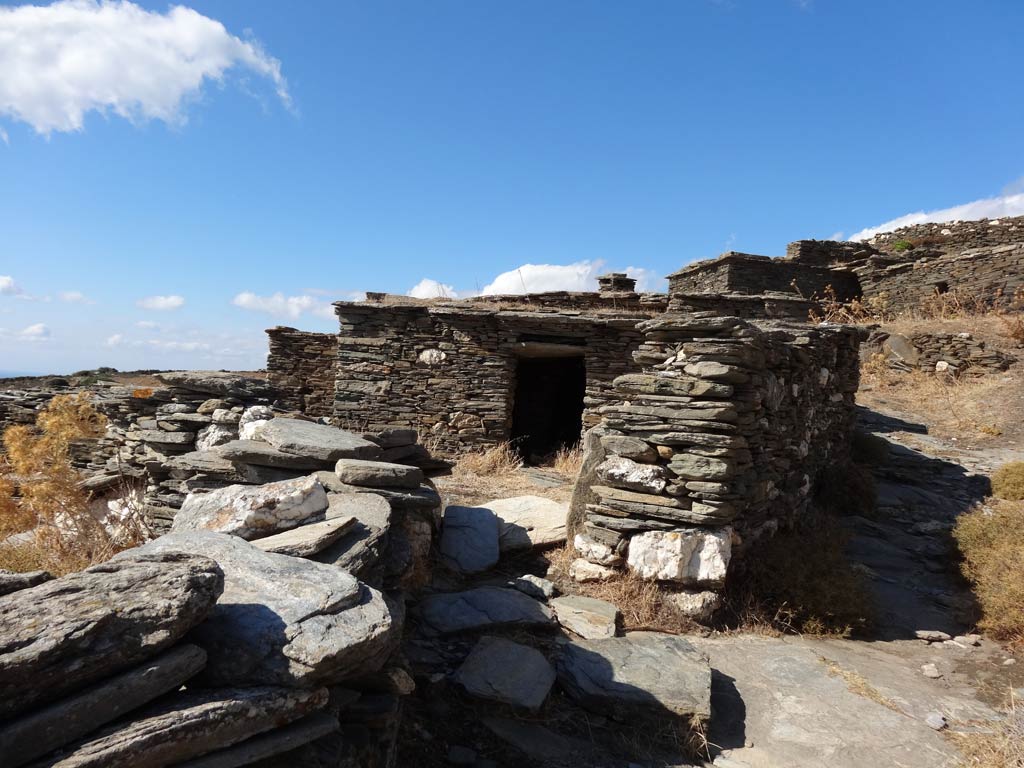
Further down, some steps remind me of piano keys.
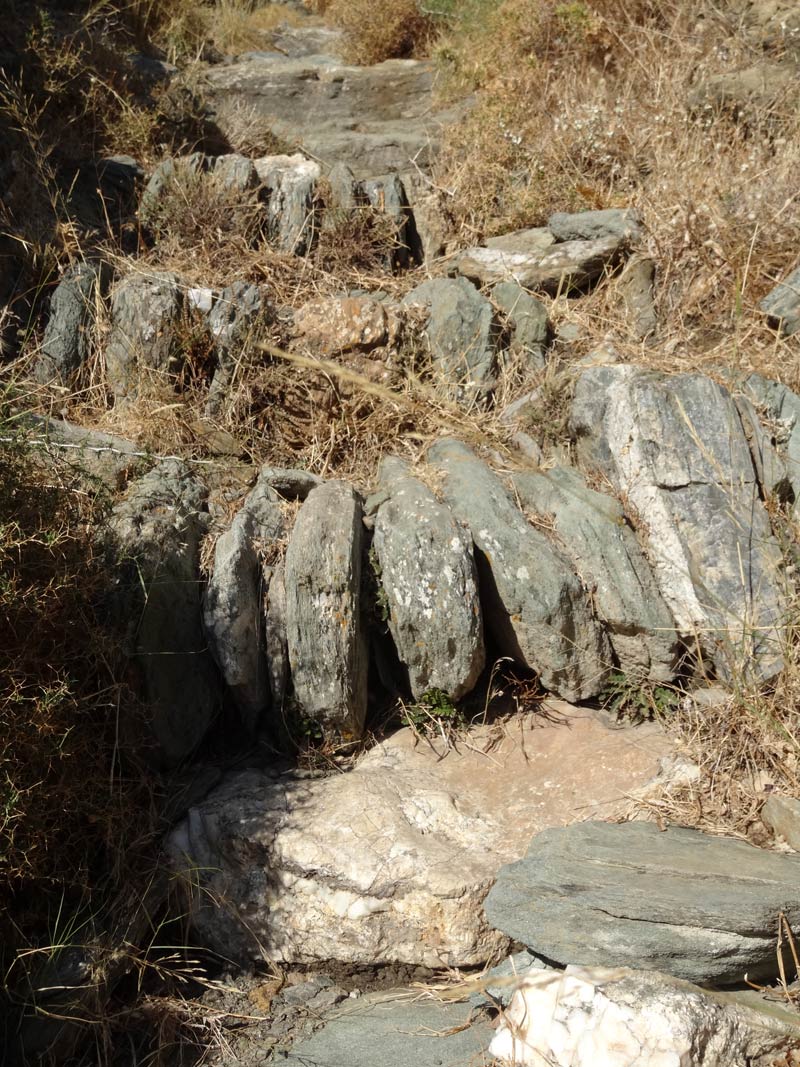
A very little church suddenly appears at half way, probably not used anymore, but set there to keep the fields under the blessing of God.
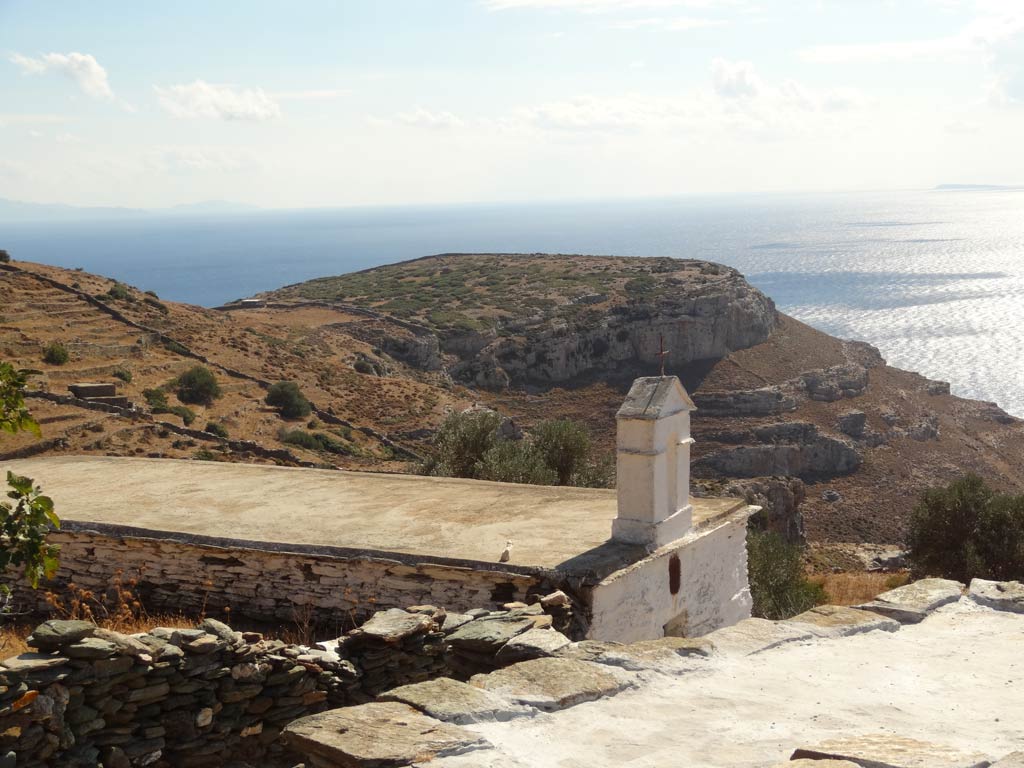
The last part of the “monopati” has a lot of terraces, which offer a wonderful sight to the green-blue sea beyond Zagora and to the island of Giaros. On one of the terraces, there is a threshing floor. These were common until a few decades ago on the island, when the farmers abandoned them for better paid work, such as on ferries.
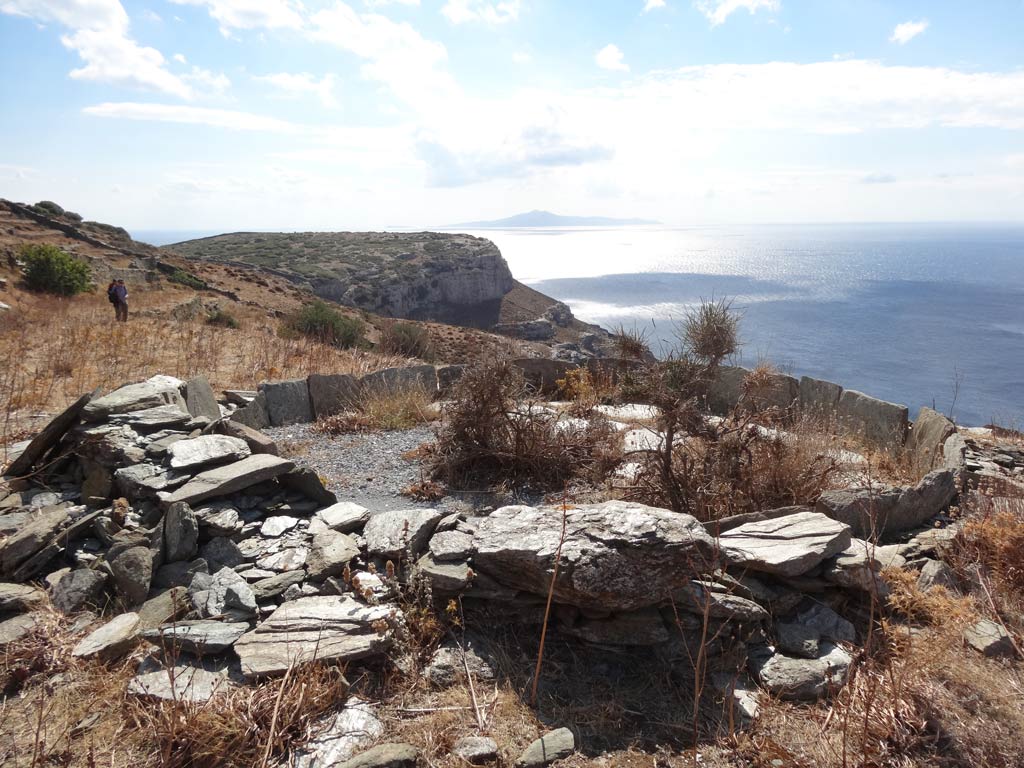
At the end of the day, tired because of the hard work, the path become an opponent to whom we must always give great respect.
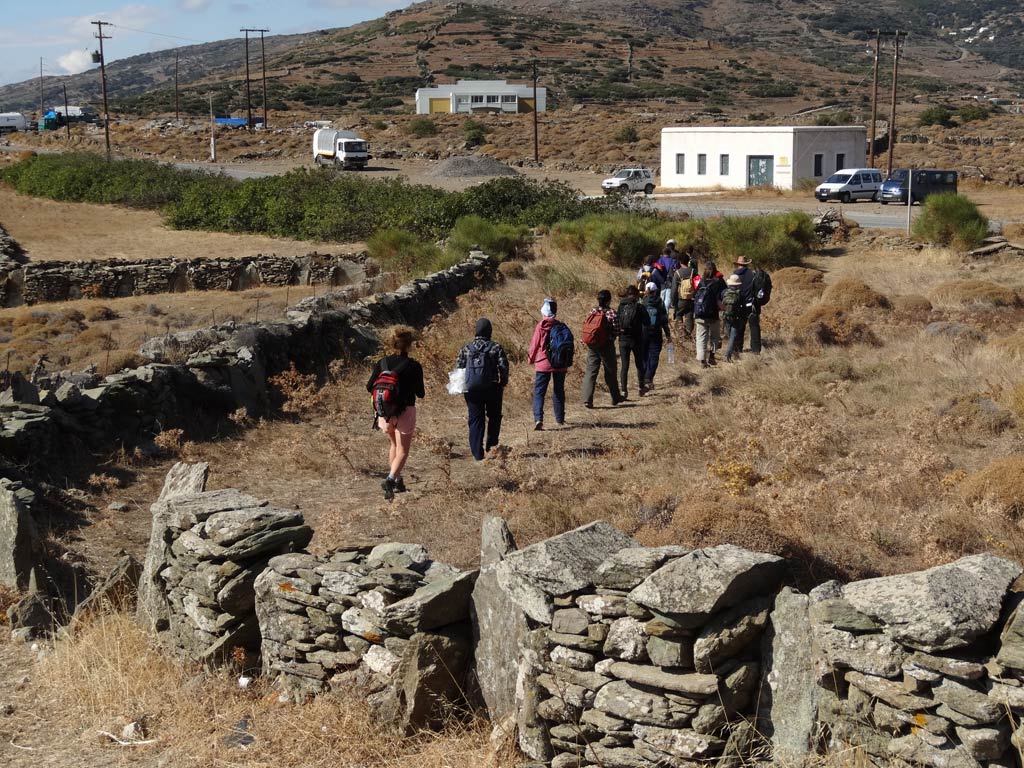
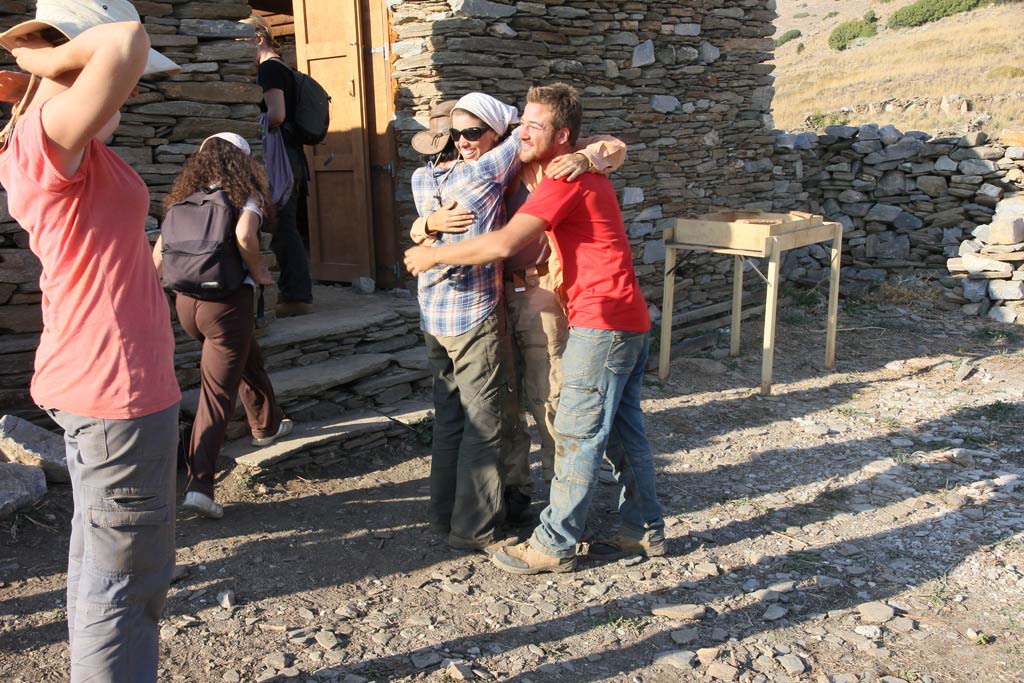
*Antonio Bianco was one of the archaeology volunteers working at Zagora in 2013.
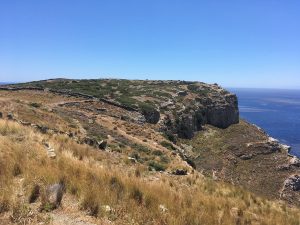
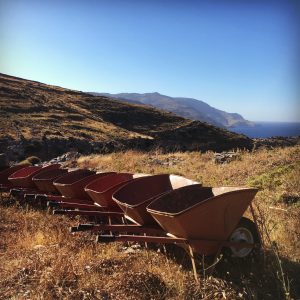
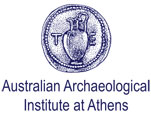
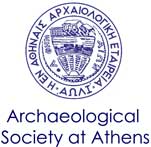


4 thoughts on “The “monopati” (path) to Zagora ”
A nice post! I’ve walked a lot of the paths on Andros, and there’s always something interesting to see – history, wildlife, geology, all sorts of things! I’m sure the old man on the donkey is hired by the Tourist Board to appear at random intervals to give a scenic “photo opportunity”! Some of the paths can be hard work – for example, the one from Palaeopoli beach up to the road has over 300 steps. Walking downhill to Zagora at the start of the day was presumably OK, but I’m full of admiration for your managing the slog back uphill at the end of an exhausting day – you must now all be as fit as fleas!
Thanks, Malcolm. Yes it could be gruelling climbing back up after a tough day in the field – especially if the weather was challenging – and it was at times hot, humid, wet and very windy (which meant we got covered in dust). Did you walk down to Palaeopoli Beach and then back up? And are the steps on a rough natural dirt track like the path to Zagora or are the steps more regular? What was the beach like – nice place for a swim? Working six days a week, we didn’t get to explore as much as we may have liked. Maybe another time….
Hi,
Well done for all the hard work you have been doing on Andros. We first visited around 1996 and have returned nearly every year.
Have been to Zagora so know the path you have hard to walk, but what a magnificent view and historical place, haven’t had to climb back after a hard days work though.
We have also climbed the steps at Paleopoli 3 times, why climb it more than once I hear you say, well it was to show other friends. But the snorkelling around the old harbour wall is worth it.
Going back in June 2014 can’t wait.
Thanks for your comment. We understand how easy it is to be captivated by the charm of Andros. And congratulations on climbing the Paleopoli steps three times. I haven’t done it myself – though your recommendation of good snorkelling in the harbour may entice me to try it next time.